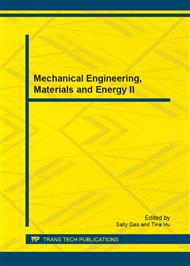p.347
p.351
p.355
p.359
p.364
p.370
p.374
p.381
p.385
Modal Analysis of a Lightweight Engine Hood Design Considering Stamping Effects
Abstract:
Modal frequency distribution of automotive structures or sub-structures is an important factor affecting the NVH performance. During lightweight optimizations of a part, the modal characteristics of the new design is often kept the same as those of the reference design to ensure that the NVH performance is not degraded. However, the effects of the part manufacturing process on the modal parameters are usually ignored in the design stage. In this study, four alternative designs of replacing the original steel hood of a passenger car with lightweight aluminum material are proposed. The stamping process (drawing, trimming and springback) of the inner and outer panels of the hood with both steel and aluminum designs is simulated in DYNAFORM. Once the residual stress, residual strain and thickness change of the panels during the stamping process are identified, a modal analysis is conducted on the four alternative designs. The obtained natural frequency data are compared with the natural frequencies of the body-in-white as well as the common excitation frequencies of the engine. It is shown that, due to parameter changes in the stamping process, the modal frequencies of the final manufactured part drift away from the original design before stamping. It is thus critical to take stamping effects into account when determining the optimal lightweight design of the hood.
Info:
Periodical:
Pages:
364-369
Citation:
Online since:
January 2013
Authors:
Keywords:
Price:
Сopyright:
© 2013 Trans Tech Publications Ltd. All Rights Reserved
Share:
Citation:


